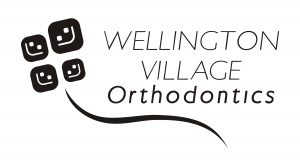When taking care of your oral hygiene, the most essential daily activity you can do is brush your teeth. When brushing your teeth it is important to purchase one that will effectively and properly get the job done. Look for the Canadian Dental Association’s seal of approval to ensure that an independent body of scientific experts has evaluated the product. Additional considerations come down to making sure the design of the brush is effective by making your experience comfortable, efficient and personalized.
Manual vs. Powered
An alternative to manual brushes is a rechargeable electric toothbrush that can help you maintain the health of your teeth and gums. The brushing action of these “power” brushes is very different from the manual variety. The electric brush provides the movement and you only need to guide it. It might take a while to get used to, but the trick is simply moving it properly over the surface area of your teeth.
Electric brushes aren’t necessarily better for your teeth but they can make it more convenient for your brushing routine. Additionally, young children might find brushing with an electric brush more fun than with a manual one. If you have difficulty brushing with a manual toothbrush it might be worthwhile to give it a try and see if you find it more comfortable or easier. Essentially this distinction is simply a matter of choice and preference so try both and see which one you prefer.
Size
An important decision when considering a purchase is the size of the toothbrush head. For best results and comfort, it is essential that this portion of the brush be properly sized for maneuverability and be capable of reaching every corner of your mouth. Make sure that you can properly reach to the sides and backs of your molars as well as having it fit comfortably in the palm of your hand. For ease of use, small-headed brushes are preferable over larger ones. When it comes to handle size, type and shape this is simply a matter of personal preference and you should pick the one that suits you best. Ask your dentist if you need a little more guidance on what size of toothbrush is best for you.
Bristle Variety
When visiting the drugstore you are presented with quite a few options when selecting bristles for your brush: soft, medium or hard nylon bristles. For most people the safest and preferred choice is soft bristles. When brushing too vigorously with medium or hard bristles you can compromise the strength of your teeth, damaging the gums as well as the root surface.
The shape of bristles can customize your tooth brushing routine even further. Available options include a cup shaped design to better accommodate the shape of your teeth, diagonal patterns to better clean the sides of your teeth or there might be slightly longer bristles intermixed that serve to get in between teeth while brushing. Look for brushes that features bristles with rounded tips for additional protection.
Toothbrush Care
Seeing as the primary use of a toothbrush is to eliminate bacteria from your mouth, you should take care that it is sanitary and bacteria-free. When going on a vacation or a trip you should cover it or keep it in a container to avoid the accumulation of dirt and harmful bacteria. When you are at home you should do the exact opposite and only store your toothbrush in vertically and in open air. This is to ensure that the moisture in the bristles can evaporate, which is important in the constantly humid environment of a bathroom.
You can explore using “toothbrush sanitizers” but there is no solid evidence that they work any better than rinsing with water and letting dry in open air. Do not attempt to sanitize your toothbrush with your oven or microwave; excessive heat will damage the brush. There is also no need to panic about a minimal amount of bacteria, which can be present on your toothbrush. The human body is constantly exposed to unfriendly microorganisms; the body is normally capable of defending itself through a variety of mechanisms inherent to how our body functions. With proper care by simply rinsing and air-drying, there is no adverse effect due to the bacteria on toothbrushes.
Each individual in your household shoÍuld have a personal toothbrush that shouldn’t be used with others. Sharing will cause an exchange of bodily fluids and microorganisms that might be harmful to everyone using the brush. With use, the bristles will become more worn and frayed which can lead to it being less effective in removing bacteria. To ensure good oral hygiene, replace toothbrushes every 3-4 months.
Brushing with Braces
Your routine when brushing remains the same while you have your braces. You continue to use the same brushes. You maintain a routine of brushing the fronts, sides, backs, chewing surfaces of your teeth. Continue to brush the tongue and roof of your mouth for a full two minutes. You can ask your dentist to prescribe you fluoride toothpaste to prevent tooth decay even further. When your braces are nice and shiny with the brackets clear and clean, you’ve done a great job! If you need help, feel free to ask your Ottawa orthodontist for any recommendations.




